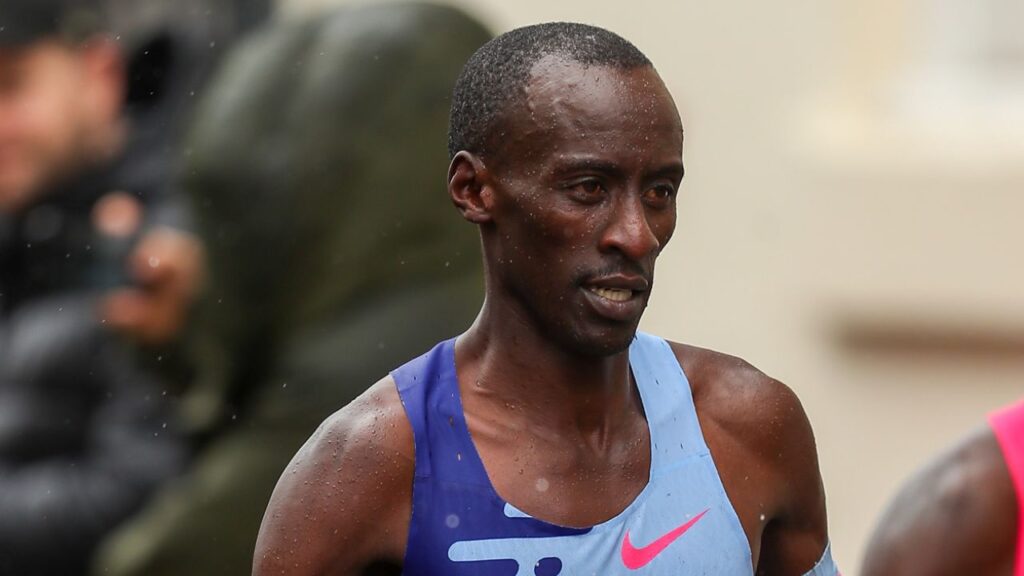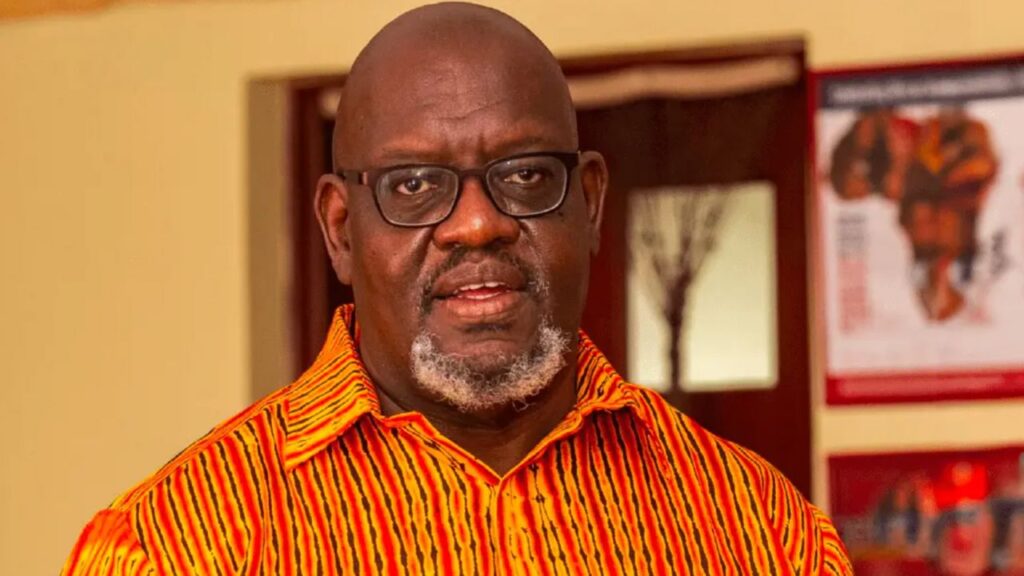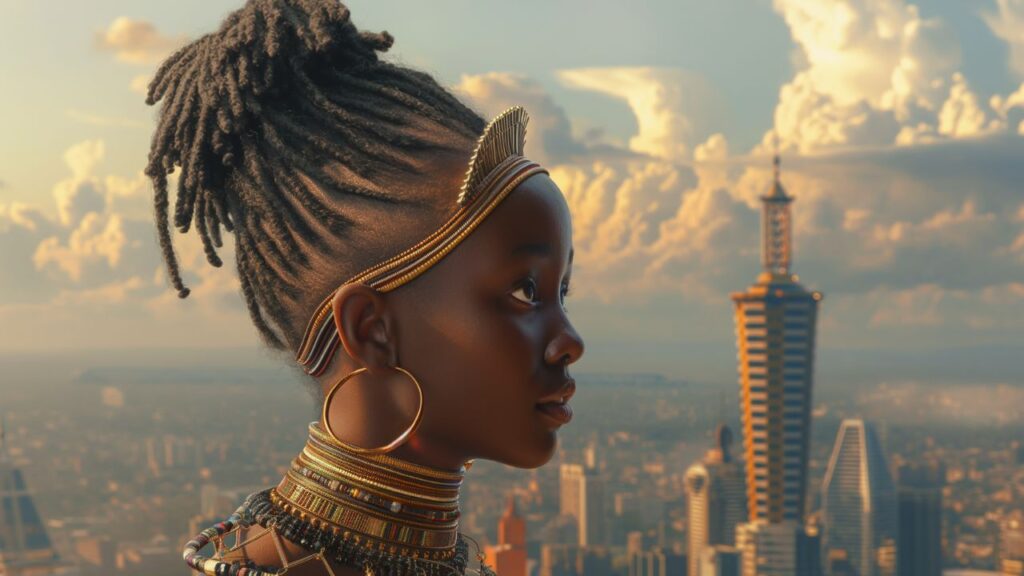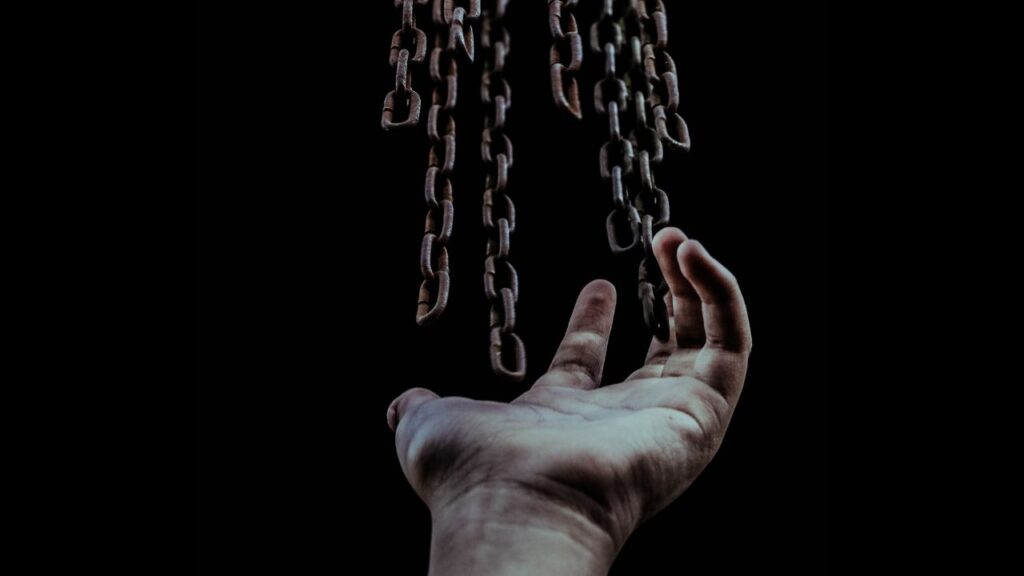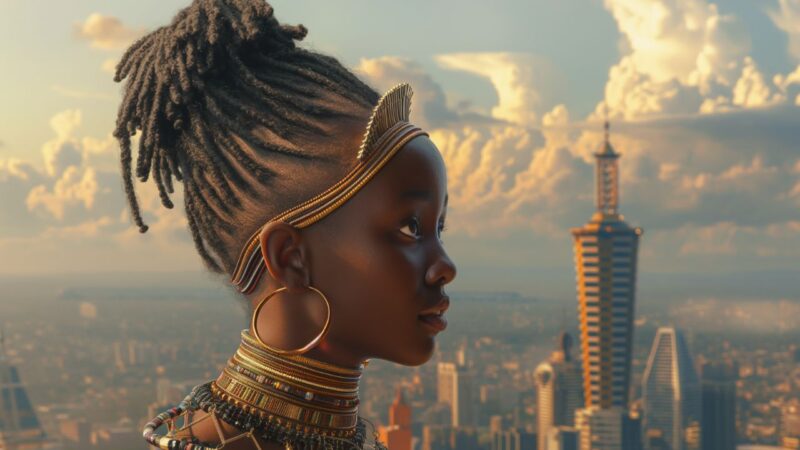I have lived in Mathare since I was four years old and I have seen it grow from a slum with a medium population density to become Kenya’s most densely populated area with over 68,000 people per square kilometre.
I began my schooling in the early 2000s at Action Child Mobilization Centre, a local private school that was nothing more than a shack built of iron sheets where we were taught by form four school leavers. In this part of Nairobi, qualifications did not matter and anybody could be a teacher as long as they had an average command of English. This was the best we could get. The different classes were scattered all over the neighbourhood, as it was not possible to find space for all the classrooms to be in one place. We became accustomed to learning while listening to loud music from neighbours’ houses and we sometimes did our exams while a couple was quarrelling and fighting next door. That was the environment we learned in.
As a resident since childhood, I can attest that despite the sad, depressing stories that come out of my Mathare, it is also a place of beautiful stories. Some of our best footballers and sports people honed their talents while training on our soil, people like football international Dennis Oliech and famed female boxer Conjestina Achieng. Mathare has also produced great musicians like Bahati, Willy Paul and Eko Dydda.
But the world does not get to hear about our success stories, knowing only about our struggles and the challenges we go through. When you mention Mathare to a random Kenyan, what comes to their mind is the Mathari Mental Hospital, Kenya’s only national and public psychiatric referral hospital that was established in 1901. Due to its close proximity to Mathare Valley, some people even have the audacity to ask why we live with “mad people”; they believe Mathare is for the mentally challenged and escapees from the hospital. I once tried to explain to a friend in high school that, just like anywhere else, only a few people in Mathare are mentally challenged. But he said, “Yes, every market has its own mad man, but Mathare is a market where all are mad.” I stopped talking to him. I was very angry and bitter about the picture painted of my home, the place that has nurtured me since I was four.
The stigma of coming from Mathare was so acute that, while in high school, I stopped telling other students where I grew up to avoid ridicule. Any wrong or “weird” answer would be attributed to my so-called upbringing with “mentally challenged people”. Most of them would back their highly opinionated statements with references to the violence witnessed during any general election, where Mathare youths are hired by rogue politicians to die for them on the streets.
Today I am writing the story of Mathare, the untold story that is unknown to many. Not out of anger or bitterness, but as a counter-narrative about the place I call home from a proud insider’s perspective. It is the beautiful story of a former quarry that became an urban bastion against oppression by the colonial government, and by the four regimes we have had in Kenya since independence.
I am writing this piece because only we can tell our story to the outside world. “The struggle of people against power is the struggle of memory against forgetting,” as Comrade Gacheke Gachihi of Mathare Social Justice Centre puts it.
Mathare did not start as a settlement for mental hospital escapees as some claim. Mathare emerged from what had been a stone quarry during the early years of colonial rule in the Pre-World War 1 (WW1) period. Most of the building stones and ballast used in the construction of the Eastleigh and Muthaiga residential areas and the Nairobi Central Business District were extracted from this big quarry. It is only after the First World War, in the early 1920s, that people started settling in Mathare. Some of the early settlers were from the areas around today’s City Park and Muthaiga that were then part of the larger Karura Forest, from where they were evicted by the colonial government. These prime areas were reserved for the white colonial elite and the former inhabitants were rounded up and concentrated in the low-laying areas, leading to the birth of Mathare and the mushrooming of the many slums in Nairobi’s Eastlands area.
The first evictees settled in the lower Pangani area that is separated from Mathari Hospital by River Mathare. This area that is today part of Mlango Kubwa and Lower Pangani was known as Kiamutisya. The different sections of Mathare were named after the headmen or leaders controlling them, like Kiamutisya and Kwa Kariuki. From there, the slum began to spread eastwards to Bondeni, then known as Kiandururu. Other areas such as Gitathuru, Mashimoni and Mathare 4A emerged gradually as the population burgeoned.
Mathare is now one of the most congested slums in Nairobi with over 500,000 residents concentrated in a mere 7.25 square kilometres. It is home to diverse ethnicities from all over the country, from as far away as Turkana in northern Kenya, and to foreign nationals from Uganda, Rwanda, and Tanzania.
Mathare is 8km from Nairobi CBD. This proximity, and its closeness to Eastleigh to the southwest and Muthaiga and Karura to the West, attracted Kenyans, particularly those from eastern and central Kenya, who came in search of jobs and settled in the area. This rural-urban migration created a cheap labour pool for the upmarket areas occupied by the settlers, as well as for the Asian community that resided in Eastleigh and Pangani. By the late 1920s, Mathare was home to several thousand Africans living in temporary makeshift houses made of wood, mud and other materials and working in the surrounding areas.
As the struggle against colonial rule began, Mathare emerged as the hub of anti-colonial organizing because of its strategic location. It slowly became the urban vanguard against the colonial government. Meetings to strategize how to disrupt the peaceful stay of the settlers in the country were planned in Mathare.
The agitation was amplified by the presence in their midst of radical elements who had fought alongside whites in both world wars. Residents started protesting against the punitive measures imposed on Africans, such as the hut tax, the kipande (identity document) and unfair urban zoning. The British felt threatened by the continued agitation and in 1952, at the start of the State of Emergency which was declared by the then Governor Sir Evelyn Baring, the colonial government razed down many houses in Mathare. Baring was reacting to intelligence that Mathare residents were supporting the Mau Mau, the nationalist movement fighting for Kenya’s independence. This did not deter Mathare residents; it only emboldened them to push further and Mathare continued to be the planning ground for Mau Mau activities.
It is during the active years of the Mau Mau (The Kenya Land and Freedom Army) struggle that Mathare became the crucible of anti-colonial action with the help of people like Pio Gama Pinto, who played a key role in uniting the different factions agitating for independence. Pinto was a Kenyan-born Goan who had studied in both Kenya and in Goa in India. After completing his studies in India, Pinto joined movements against Portuguese rule in Goa, which placed his life in danger and so he fled back to Kenya for his safety. In Kenya, he was the link between trade unions, the Mau Mau, lawyers and others involved in the fight against British rule in Kenya.
Workers from Karura and other areas would steal arms and other supplies from their white employers, which would be gathered and smuggled to the Aberdare and Mt. Kenya forests from where Mau Mau guerrillas were waging their war against the British.
After Kenya gained independence in 1963, the population of Mathare grew exponentially as more people flocked to the city. The first government of Jomo Kenyatta did not undertake any measures to improve the dire living conditions of the people of Mathare. The residents continued to live under the poor conditions that had existed since the colonial period. As the slum expanded, the residents were abandoned to their fate, despite the active and largely undocumented role they had played towards the attainment of Kenya’s independence.
This neglect of the people of Mathare continued under the Moi regime. During his 24 years in power, nothing was done to ensure planning, access to water and other basic services. In 1982, the residents of Mathare bore the brunt of the failed Kenya Air Force coup. The Moi government turned its anger on helpless and defenceless citizens, the majority of whom had no idea what was happening in the country. The military were unleashed on the residents like bloodthirsty dogs and houses were ransacked under the guise of searching for soldiers who had participated in the failed coup and whom it was alleged were being harboured in Mathare. The crackdown that followed in the wake of the failed coup left more than 200 civilians dead, the majority from Mathare, which is just across the road from Moi Air Base, the epicentre of the aborted coup attempt. Bodies were left lying in the streets and hundreds were maimed and injured. The damage was enormous, and the trauma would last peoples’ lifetimes.
The oppression has continued, but has never broken the resilience of the residents of Mathare, forged from a legacy of resistance. The neglect continued unabated under the Kibaki regime, and together with it, oppression from law enforcement agencies. An example that stands out is the infamous crackdown on Mungiki in Kosovo and other parts of Mathare between 6 and 9 June 2007. Those were tension-filled days as officers of the feared General Service Unit unleashed violence, rounded up citizens and demolished tens of shacks. The crackdown came after two police officers were killed and their guns stolen on the night of 4 June 2007. It was a terrible time to be a young man in the valley. Wearing dreadlocks only made things worse as they would use that to profile members of the banned Mungiki Sect. Young men were rounded up, made to lie on the streets, beaten and then forced to wade in the filthy and murky Mathare River in search of the arms that were supposedly dumped there. As though the demolitions and brutality meted on them was not enough, the police then executed more than 30 young men, some in broad daylight. The executions were carried out under the orders of the former Minister of Interior Security John Michuki and the former Inspector General of Police Gen. Muhammed Ali.
One day during that terrible week, shortly after our mid-morning break, the sound of gunshots reverberated around us. The police were firing tear gas grenades and our school was soon engulfed in smoke. With no water available, we washed our faces with the porridge in our mugs and as panic spread, some of my class six classmates tore through the iron sheets and scampered to the safety of their homes.
It is during this time that I witnessed a scene that has never left my mind. It is still as vivid as though it happened yesterday. A man was lying face down on the ground with some officers poking his back with their bayonets, those sharp knives fixed to the muzzles of their guns. The man was crying and pleading with the police and after a few minutes, gunshots rung through the air scattering the crowd that was watching from afar. I went back to the scene late in the afternoon and what I found was only blood-soaked soil. I have lived with that memory my whole life.
That same afternoon, I saw the Inspector General of Police criss-crossing the alleys and open trenches in the valley. It was very unusual to find a high-ranking government official in the deepest parts of Mathare. He was escorted by a contingent of heavily armed officers. Even at my young age, I knew that the next few days were going to be hell, and they were. The people of Mathare endured nights of violence at the hands of state agents and more people died. My two cousins, who had come to the city in search of jobs after finishing high school, had to be sneaked out before the door-to-door search that started with the start of the dusk to dawn curfew that had been imposed. The operation left more than 30 people dead, hundreds injured, demolished shanties, displaced people, and trauma. This kind of reaction by so-called law enforcers has also been witnessed during election times, where police officers act without regard for the sanctity and dignity of human life.
Uhuru Kenyatta’s Jubilee government has exacerbated the already precarious situation in Mathare. As poor youth, we have been criminalised by the same system that oppressed our grandfathers and our fathers. Young men spotting dreadlocks like those worn by Kenya’s freedom fighters are targeted for arbitrary arrest, extortion, killings and, as is the trend nowadays, enforced disappearances. According to Missing Voices, an organization that documents cases of arbitrary arrests, enforced disappearances and extrajudicial killings, 105 people were killed or disappeared by police between January and July 2021. The majority of these killings and disappearances occurred in the low income neighbourhoods of Nairobi such as Mathare. It is quite common for a youth to be framed and accused of being in possession of marijuana – it is planted in their pockets during arrest – and end up disappearing at the hands of the police, only for their lifeless bodies to be found in the city morgue or dumped somewhere else.
I see the youth being terrorized every day in this valley. I have also been a victim of arbitrary arrest several times by the same officers who swore to protect us and uphold the constitution. I have lost classmates and friends to police bullets; the trend of extra-judicial executions continues unabated.
It is this injustice that led me to join the Ruaraka Social Justice Centre immediately after graduating from college instead of looking for an internship or finding a job.
A systematic approach is needed to deal with this systematic oppression of generations of Kenyans, first by the colonial government and the African Home Guards, and by their allies in the four post-independence regimes. One of the founders of the Mathare Social Justice Centre, Gacheke Gachihi saw this need and collaboratively established this community justice centre in the heart of Mathare, on the same grounds where the anti-colonial struggle was planned. As a visionary leader, Gachihi saw the need to form a network of social justice centres in the country that would coalesce around issues of social justice. The reactionary approach of one-day demonstrations has been replaced with a systematic approach: that of organizing the community, educating it and allowing the same community to liberate itself from the shackles of exploitation and oppression. Through this community organizing, of which I have been a part since 2019, the residents of Mathare are now cognizant of the power of a united people with a common goal.
With my pen and paper, I shall live to protect Mathare and its rich history and heritage that derives from the critical role it has played in organizing the masses and as a revolutionary bulwark against oppression in the colonial era and during successive regimes. The onus is now on my generation not to betray the struggle but to bring it to fruition.
Mathare is now home to various progressive groups such as the Mathare Youth Sports Association (MYSA), Mathare Roots, Mathare Green Movement and the Mathare Social Justice Centre (MSJC), the mother centre of the social justice centres movement in Kenya. Mathare is once again leading the struggle against oppression and it continues to play this role faithfully. The blood of our freedom fighters that was shed on our soil will continue to water the seeds of our freedom. Every time I walk along Mau Mau Road, from Mabatini to Mlango Kubwa in Mathare, I walk with my head held high knowing that I am walking on fertile ground, the home of past, current and future revolutionaries. The name Mathare is no longer a source of shame for me but a beacon of hope for the future for I now know that it means resilience. From Mathare to the world, the social justice movement is born. May the sacred torch of freedom fighters never dim but light the way to a socially just nation.
Appreciation
This article would not have been complete without contributions from Comrade Kimani Antony of Kiamaiko Community Social Justice Centre, Comrade Samuel Kiriro of Ghetto Foundation, Mr Zaangi of Muungano wa Wanavijiji and Comrade Gacheke Gachihi of Mathare Social Justice Centre


